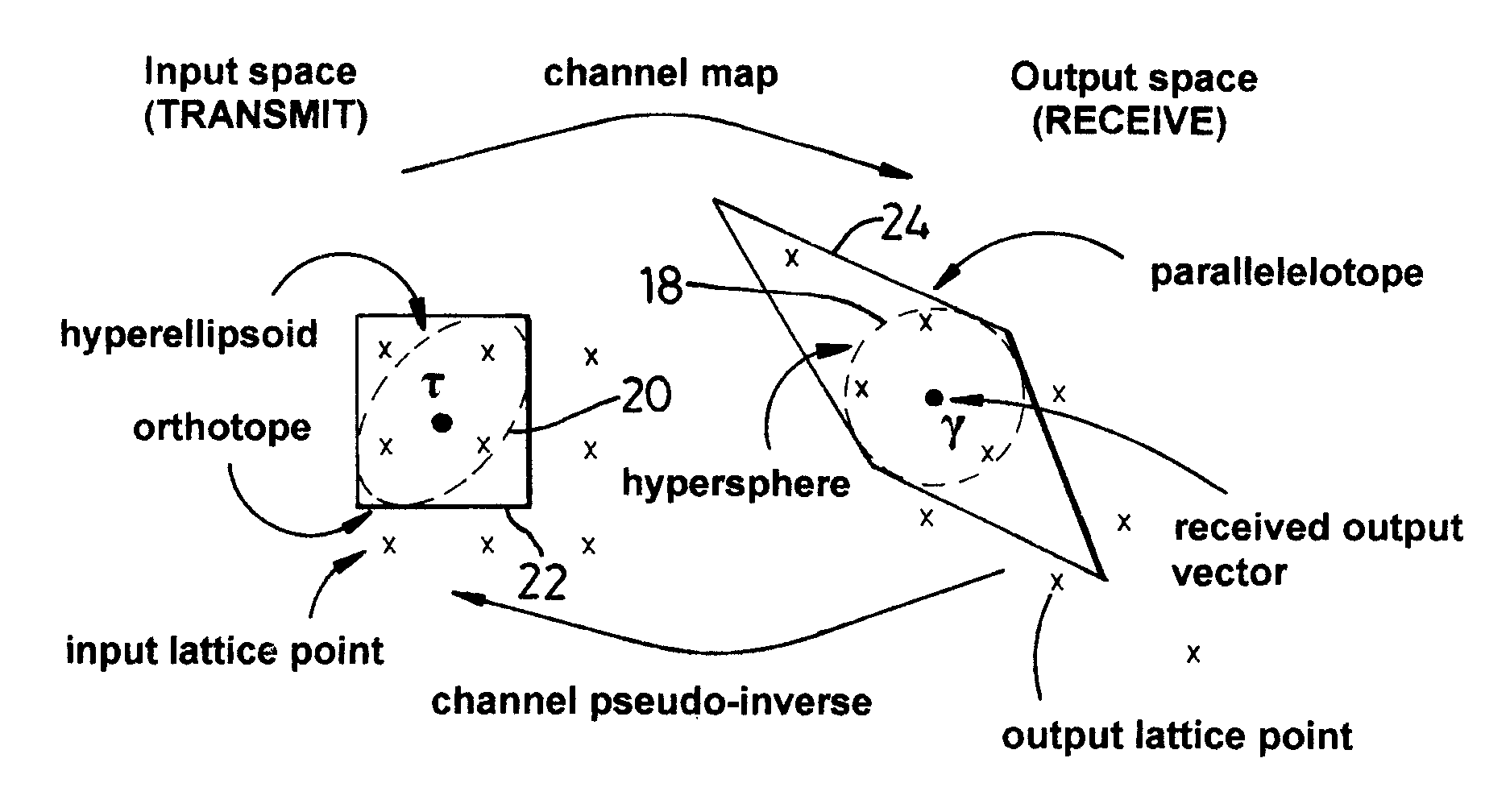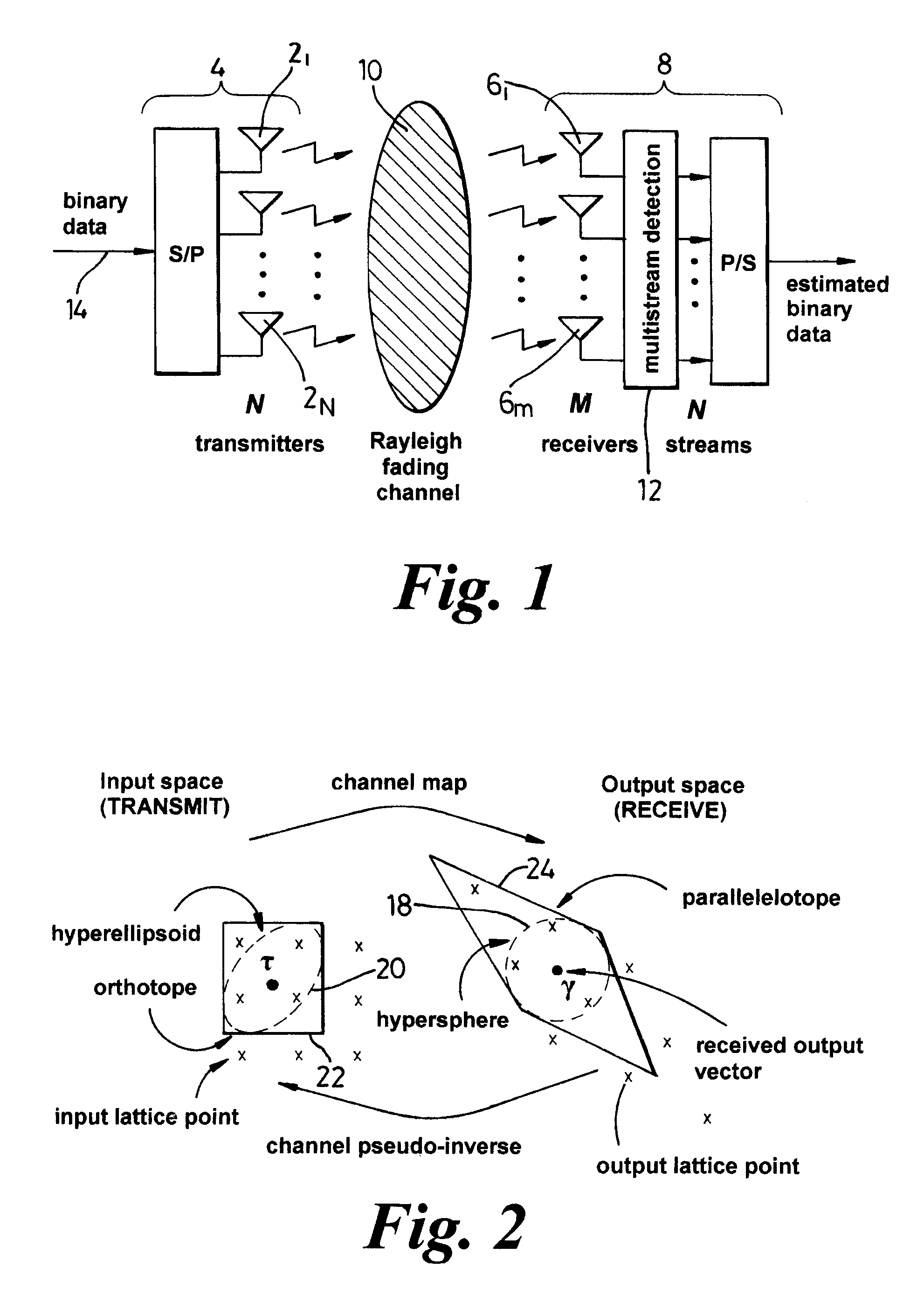Maximum likelihood decoding
a probability decoding and probability technology, applied in the field of probability decoding, can solve the problems of increasing the number of transmitted data streams, noise, and adding to the signal received from the transmitting antenna
- Summary
- Abstract
- Description
- Claims
- Application Information
AI Technical Summary
Benefits of technology
Problems solved by technology
Method used
Image
Examples
Embodiment Construction
[0108]There will now be described by way of example the best mode contemplated by the inventor for carrying out the invention. In the following description, numerous specific details are set out in order to provide a complete understanding of the present invention. It will be apparent, however, to those skilled in the art that the present invention may be put into practice with variations of the specific.
[0109]With reference to FIG. 1, the present invention relates to the detection of information symbols, or data, sent using N multiple co-channel transmit antennas (21 . . . 2N) of a transmitter (4) of a single entity and received by using M multiple co-channel receive antennas (61 . . . . 6M) of a receiver (8) of a single entity over a Multiple-Input-Multiple-Output (MIMO) channel (10) of a wireless communications system. The single entities (4, 8) may, for example, be a mobile user equipment or a base station of the wireless communications system. The MIMO channel may be between tw...
PUM
 Login to View More
Login to View More Abstract
Description
Claims
Application Information
 Login to View More
Login to View More - R&D
- Intellectual Property
- Life Sciences
- Materials
- Tech Scout
- Unparalleled Data Quality
- Higher Quality Content
- 60% Fewer Hallucinations
Browse by: Latest US Patents, China's latest patents, Technical Efficacy Thesaurus, Application Domain, Technology Topic, Popular Technical Reports.
© 2025 PatSnap. All rights reserved.Legal|Privacy policy|Modern Slavery Act Transparency Statement|Sitemap|About US| Contact US: help@patsnap.com



